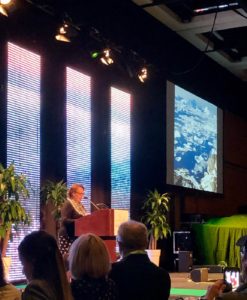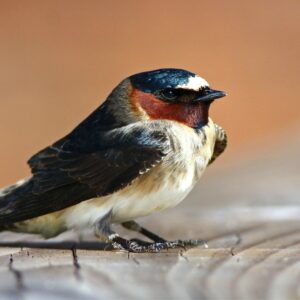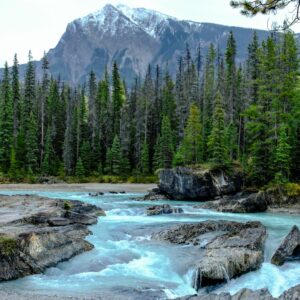Back to the Future: Trends for Canada’s parks and protected areas
Historic Quebec City was a beautiful backdrop for this year’s Canadian Parks Conference, held October 7-10, where expanding protected areas was top of mind for Nature Canada.
The event—the second of its kind in Canada—is designed to bring together a broad set of stakeholders to discuss the future of parks in Canada and, more broadly, nature itself and how to ensure it can thrive long-term. Sessions cut across a spectrum of issues and generated crucial discussions related to the extinction crisis.
Several sessions highlighted major trends that are rapidly changing the future of parks and protected areas. We heard more news on the steep decline of species and biodiversity in Canada and around the world and how a changing climate is denying Inuit communities the “Right to be Cold,” as Sheila Watt-Cloutier eloquently explained.
Jonathan Baillie, Chief Scientist at the National Geographic Society, laid out how new technologies are rapidly transforming both how scientists and park officials can monitor and avert species loss, report results to funders, and engage and connect new audiences to nature.
 It was fun watching Emma Buchanan—Nature Canada’s lead for the upcoming Natural Climate Solutions Conference—discover how parks are using virtual reality technology to expand the ways in which visitors can explore highlights of protected areas. The wonders never cease.
It was fun watching Emma Buchanan—Nature Canada’s lead for the upcoming Natural Climate Solutions Conference—discover how parks are using virtual reality technology to expand the ways in which visitors can explore highlights of protected areas. The wonders never cease.
Another major current in discussions was focussed less on highlighting change and more on the importance of holding the line and gaining strength from traditional, even ancient, wisdom.
A session on Natural Infrastructure promoted the slogan The Climate is changing, but some things shouldn’t! as a way to underscore the need to ensure commitments to create permanently protected areas focussed on conservation goals are not abandoned.
Other sessions, including one organized by the Indigenous Leadership Initiative, stressed the important contribution of traditional Indigenous knowledge to help ensure nature flourishes.
Valerie Courtois pointed out that even as Canada struggles to secure 17% of land is protected, Indigenous territories in Canada and the world over are havens for wildlife and nature with protection rates higher than 60%.
Watt-Cloutier passionately laid out the case for the next generation of Inuit and Indigenous youth to learn and experience traditional ways through land-based teachings, to instill confidence, judgment and the skills long-held by Inuit peoples to secure environmental and cultural wellbeing.
 This is essential, she explained, to not only secure Arctic ecosystems but to allow healing of historical trauma. It’s a question of human rights, social justice and planetary survival. Our futures are profoundly connected
This is essential, she explained, to not only secure Arctic ecosystems but to allow healing of historical trauma. It’s a question of human rights, social justice and planetary survival. Our futures are profoundly connected
One of the final panels, Beyond 2020, outlined the opportunity for Canada in the coming year. The conditions are set:
- growing momentum and investments by governments to advance protected areas;
- strong public support for the protection of nature;
- unequivocal scientific consensus on the need to address species loss and on the road map for how to do it;
- a burgeoning, if unmet, demand for reconciliation with Indigenous peoples.
What is needed now, Stephen Woodley and other panelists pointed out, is for a major mobilization of Canadians to insist on ambitious action. The movement needs to be larger than politicians—across ENGOs, youth, communities, business, Indigenous peoples and others, propelling leaders to action.
At Nature Canada we’re excited at the opportunity in the year ahead to mobilize with Canadians from all walks of life to call on the next federal government to #MakeRoomForNature by setting and achieving ambitious national and global targets to protect 30% of land and waters by 2030, and up 50% in the longer term. Join us!



